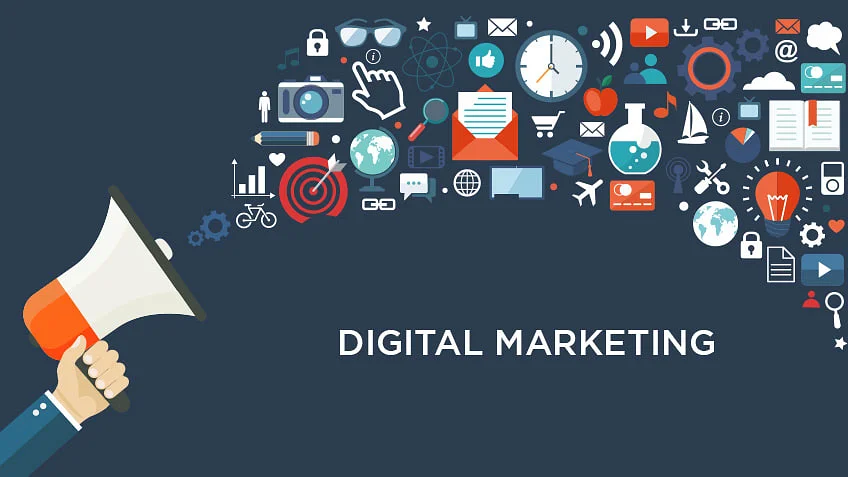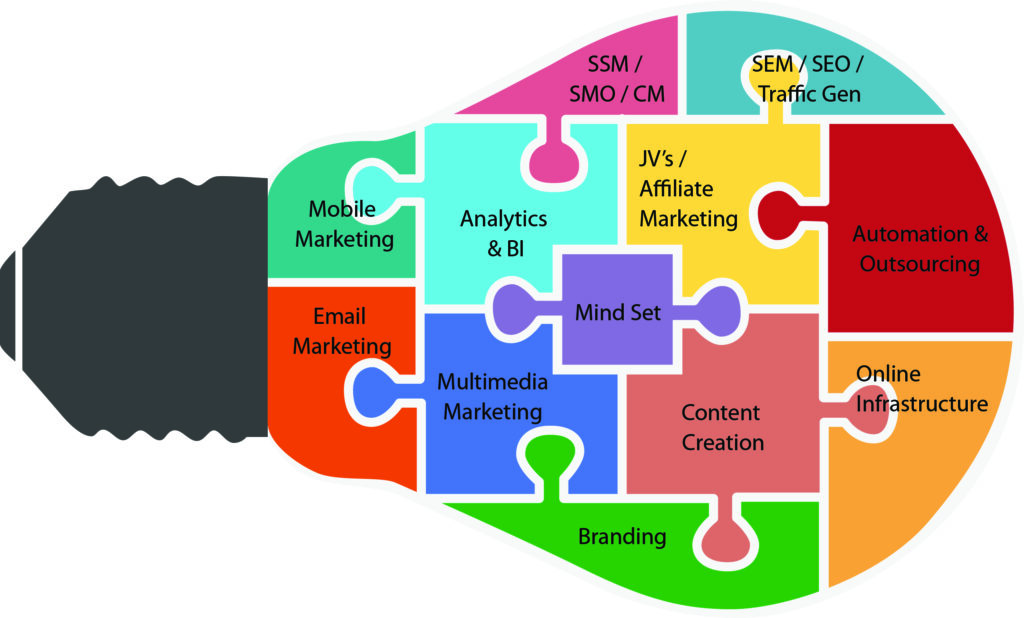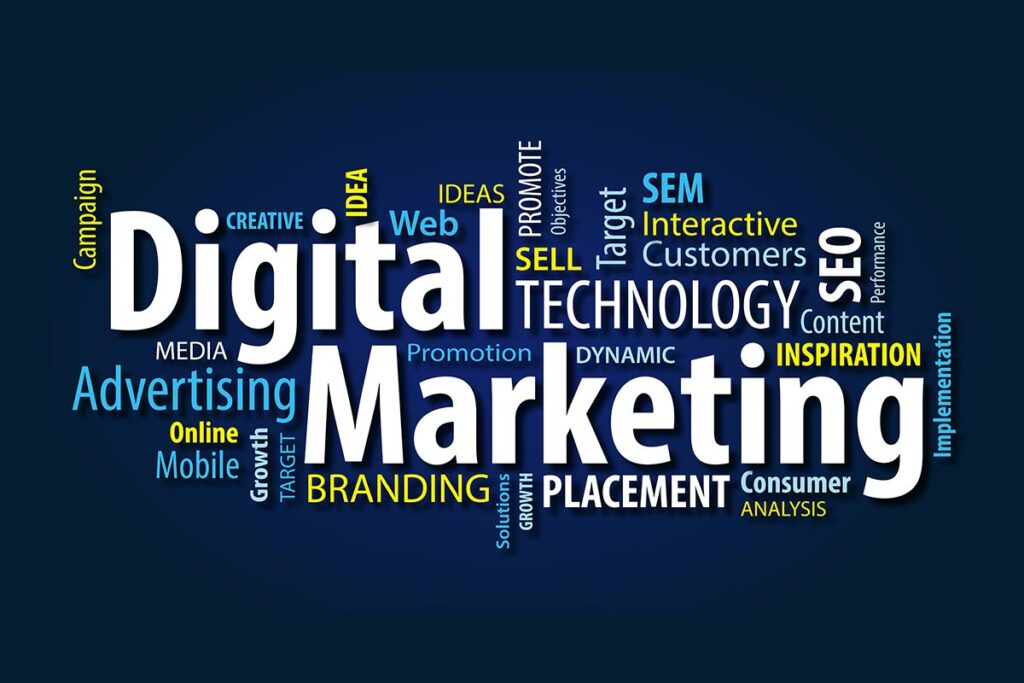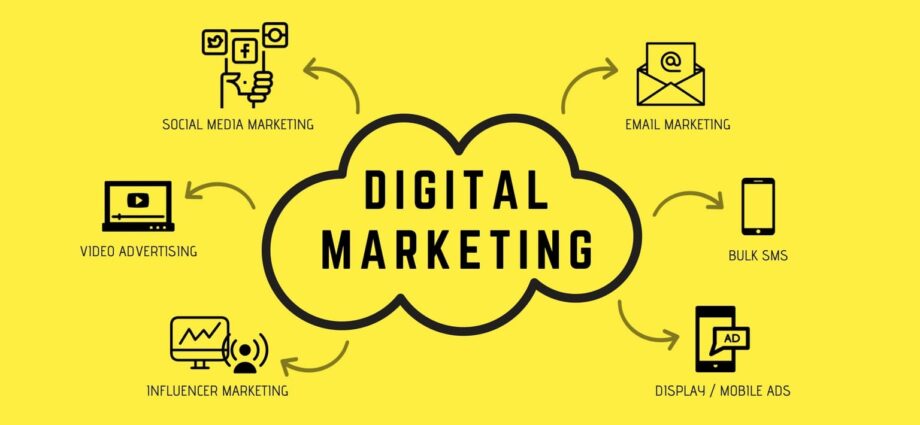Facets of Digital Marketing
What is Digital Marketing?
Digital marketing as a career might have a lot more to offer than you think. We at Laudco help to bridge this gap by trying to offer the most suited and adjusted form of digital marketing according to your capabilities and competence.

Let us first understand what Digital Marketing is and then we shall proceed with explaining all the Facets of Digital Marketing.
Any form of marketing that can be measured by marketing experts across the consumer journey and that leverages electronic devices to deliver promotional messaging. Digital marketing is most commonly used to describe advertising campaigns that run on a computer, phone, tablet, or other electronic devices. Online video, display ads, search engine marketing, paid social ads, and social media posts are just a few examples of the various formats it can take. Digital marketing is frequently contrasted with “conventional marketing” methods like direct mail, billboards, and magazine advertisements. Oddly, traditional marketing is frequently grouped with television.
The promotion of brands via the internet and other digital communication channels is known as digital marketing, sometimes known as online marketing. This comprises text and multimedia messages as well as email, social media, and web-based advertising as a marketing channel.
In essence, a marketing effort is considered to be digital marketing if it uses digital communication.

Facets of Digital Marketing
- Branding and Communication
Advertising, social media, and customer evaluations are just a few examples of the activities that make up brand communication. Every time a prospective customer or client connects with a certain brand, brand communication occurs. It can entail subscribing to a newsletter or discovering a logo online. Creating a recognizable brand will improve the effectiveness of all communication channels.
Companies should invest time in creating communication strategies since they are crucial to creating a cohesive brand. A brand is likely to fail without a successful strategy. People must be aware that certain goods and services exist in order for them to make a purchase, and brand communication makes this knowledge possible. Making a decision on how to communicate is crucial, but so is the frequency and accessibility of that communication.
Read more: The Elusive World Of Social Media Influencers.
- Social Media & Strategy
A social media strategy outlines how to maximize engagement and interactions on social media platforms in order to accomplish a company’s goal. These goals can be to increase brand awareness, produce a viral impact, or generate leads.
Marketers who are reading this are likely two steps ahead of the game considering plans, tactics, and tools for social media marketing. But let’s simply halt that train of thinking and go back a few steps to the business strategy that every company begins with. Another term for the intention of a company to develop relationships is a target audience. Brands want more than just transactions—they want relationships. Relationships give firms a viable business strategy and provide clients with lifetime value. In order to understand how a social media strategy must complement a business plan in order to achieve business objectives, it is helpful to have a general understanding of what constitutes a company strategy.
- Digital Performance Marketing- We throw around the word “digital marketing” so frequently. Digital marketing actually comes in a variety of forms, and each type’s outlet and capabilities are expanding on a daily basis.
Performance marketing is one underutilized digital marketing tactic. Advertisers only receive payment with performance marketing when particular events take place. When a viewer clicks through to their page or purchases anything, for instance.
In performance marketing, brands only pay marketing service providers after their business goals have been achieved or after specified actions, such as a click, sale, or lead, have been taken. This is performance-based marketing, to put it another way. In order to build and run adverts for their business on any number of performance marketing channels, including social media, search engines, videos, embedded web content, and more, advertisers must connect with publishers or agencies. These advertisers don’t pay for advertisements in the conventional sense; instead, they pay based on how well their ads work as measured by the quantity of clicks, impressions, shares, or purchases.
- Website and App Development- The difficult process of planning, creating, testing, and deploying a web-based program is known as web application development. A firm may decide to develop a unique web application when they want to establish an online presence. Web apps are dynamic, user-input-enabled pages that run on a web server. A web application is distinct since it is hosted online and can be accessed using a browser. Additionally, they are more economical than developing mobile applications and are secure and simple to backup.
The development lifecycle for web applications is often brief and is overseen by a small development team. Client-side programming is used to construct the front end of web applications. A client is a computer program, such as a web browser. HTML, CSS, and JavaScript are often used in client-side programming. While CSS maintains the proper formatting of presented data, HTML programming tells a browser how to display the on-screen content of web pages. On a web page, JavaScript will execute JavaScript code, making some of the content interactive. Web applications’ scripts are made using server-side programming, which also powers client-side programming. Multiple scripting languages, including Ruby, Java, and Python, can be used to create scripts. Server-side scripting will produce a unique user interface and conceal the source code used to build the interface.
- Data Solutions- The days of assuming you could figure out who your target audience was are long gone. Big data enables you to get in-depth information on virtually any demographic you could want to target. All of which is pretty amazing when you consider that a decade ago, this level of insight was virtually unattainable.
Marketers may now keep track of the websites that potential customers visit, their preferred social media platforms, and their current product preferences. It’s also feasible to monitor their actions on specific pages or find out how many online shopping carts they’ve previously abandoned. For many firms, real-time customization is now possible. The subjects and problems covered in content marketing initiatives have likewise become increasingly pertinent to the audiences for which they were created.
- Influencer Marketing- The concept of influencer marketing is not new and has dated back to the late 1800s when royalty and celebrities began receiving payments to endorse goods. Influencer marketing has thrived in recent years, thanks to development and technology which gave us social media and digital platforms.
To put it simply! A social media influencer is someone who wields their influence through social media. When you hire an influencer to promote your products or services, that’s influencer marketing.
Today, people especially; fun fact, 70% of the teens, rely majorly on reviews, testimonials, and word-of-mouth recommendations from their favorite social influencers since they have learned that the majority of brand marketing cannot be trusted. Marketers have discovered that it’s simpler to promote their marketing campaigns and secure brand endorsements by focusing on our favorite influencers, who we already follow-on social media sites. Through increased backlinks and content amplification, influencers also affect your SEO. Influencer marketing focuses less on paid advertisements and more on developing genuine connections between your company, your target consumer, and the internet users (and websites) they already follow or visit.
- AI Driven Solutions- Data is transformed from a cost center into a vital organizational asset thanks to AI-driven services. Moving from the ability to operationalize one, two, or tens of machine learning models to hundreds or thousands of models that all collaborate to develop the core business is the first step in getting there.
Read more: How Branding Affects Consumer Behavior
Conclusion-
In order to build and run adverts for their business on any number of performance marketing channels, including social media, search engines, videos, embedded web content, and more, advertisers must connect with publishers or agencies. These advertisers don’t pay for advertisements in the conventional sense; instead, they pay based on how well their ads work as measured by the quantity of clicks, impressions, shares, or purchases. Marketers have discovered that it’s simpler to promote their marketing campaigns and secure brand endorsements by focusing on our favorite influencers, who we already follow-on social media sites.



Great read regarding an overview of digital marketing as well as its benefits for continued business success. Thanks for this.